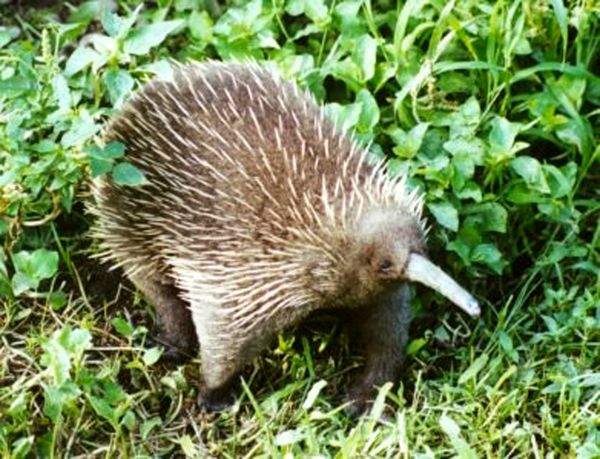 Most of us also learned about such crazy looking creatures as the egg-laying, bill-wearing, venomous oddity the platypus. Platypuses and their relatives the echidnas sport a mishmash of mammalian, reptilian and bird-like characters (and genetics!) making them pretty darn cool to most anyone interested in biology and evolution.
Most of us also learned about such crazy looking creatures as the egg-laying, bill-wearing, venomous oddity the platypus. Platypuses and their relatives the echidnas sport a mishmash of mammalian, reptilian and bird-like characters (and genetics!) making them pretty darn cool to most anyone interested in biology and evolution.Amazingly, despite there being only a handful of echidna and platypus species living in the world, some of them are woefully understudied. Fortunately, some researchers are taking on the challenges of studying these animals, and as a result we're beginning to unravel some of the mystery surrounding these amazing little critters.
Before pointing you towards a nice article summarizing recent work on the Eastern Long-beaked Echidna, a quick refresher on mammalian taxonomy. Within the class mammalia, organisms are usually divided into two major groups: (1) the subclass theria which includes most mammals and is itself divided into two infraclasses -- the eutherians ("placentals") and the metatherians (marsupials and their relatives) -- and (2) the subclass protheria which is comprised of the single order monotremata - the egg-laying echidnas and platypuses (more on mammal taxonomy here). That means you yourself are probably more closely related to any random mammal alive on the planet today (whales, elephants, aye-ayes, bats, chimps, etc.) than you are to the echidnas or the platypus. But, I digress... time to get on to the article.
Today, an acquaintence of mine and professor shared this article (I'll admit it - it was via facebook) about the Eastern Long-beaked Echidna that summarizes some of the recent work published in the Journal of Mammalogy. The scientific article requires a subscription - or friend at a subscribing institution - to download:
Muse D. Opiang. 2009. Home Ranges, Movement, and Den Use in Long-Beaked Echidnas, Zaglossus Bartoni, from Papua New Guinea. Journal of Mammalogy 90(2):340-346. doi: 10.1644/08-MAMM-A-108.1More on the article can be found over on Jerry Coyne's blog Why Evolution is True. More about monotremes can be found here.





0 comments:
Post a Comment